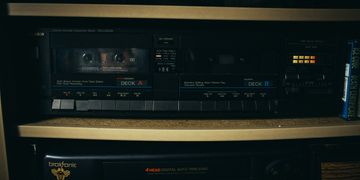From Standard to High-Def: Exploring the Evolution of Physical Media



Physical media has come a long way since its inception, evolving from standard definition DVDs to high-definition Blu-ray discs. The transition from DVDs to Blu-rays marked a significant shift in the home entertainment industry, offering consumers a superior viewing experience with improved image quality and sound. Let's delve into the fascinating journey of physical media evolution and explore the differences between DVD and Blu-ray formats.
The Rise of DVDs
The history of DVDs dates back to the late 1990s when they first emerged as a popular choice for storing and distributing video content. DVDs revolutionized the way we watched movies at home, providing a convenient and reliable platform for enjoying our favorite films.
With their standard definition resolution, DVDs quickly became a household staple and remained the dominant physical media format for years.
Enter Blu-ray: A New Era in Quality
However, as technology advanced and consumer demand for higher-quality video increased, Blu-ray discs entered the scene as the next generation of physical media.
Blu-rays offered several advantages over DVDs, most notably their ability to deliver content in stunning high definition.
The increased storage capacity of Blu-rays allowed for higher bitrates and better video compression, resulting in sharper images and more vibrant colors.
Physical vs Digital: The Ongoing Debate
The shift from DVDs to Blu-rays sparked a debate over digital vs physical media, with some arguing that digital platforms were the future of home entertainment.
While streaming services and digital downloads have become increasingly popular, physical media enthusiasts continue to appreciate the tangible benefits of Blu-ray discs.
The tactile experience of holding a Blu-ray case, browsing through special features, and enjoying uncompressed audio make physical media a unique and immersive entertainment option.
DVD vs Blu-ray: Key Differences
When comparing DVD and Blu-ray formats, the differences are clear:
-
DVDs provide decent video quality and are compatible with a wide range of players.
-
Blu-rays offer superior resolution, improved audio performance, and enhanced features such as 3D capabilities and interactive content.
The transition from DVDs to Blu-rays represented a significant leap in video quality and set a new standard for high-definition home entertainment.
A Timeline of Innovation
Looking at the timeline of media formats, it's evident that technology continues to evolve at a rapid pace.
From VHS tapes to DVDs to Blu-rays, each format has brought about advancements in video storage and playback capabilities.
As consumers seek better viewing experiences, the demand for high-definition formats like Blu-ray remains strong, catering to those who value quality and fidelity in their home entertainment systems.
Conclusion
In conclusion, the evolution of physical media from standard to high-definition formats has revolutionized the way we consume content at home.
While digital platforms offer convenience and accessibility, Blu-ray discs continue to provide unmatched video and audio quality for discerning viewers.
As technology continues to progress, it will be interesting to see how the landscape of home entertainment formats evolves to meet the changing needs and preferences of consumers.




